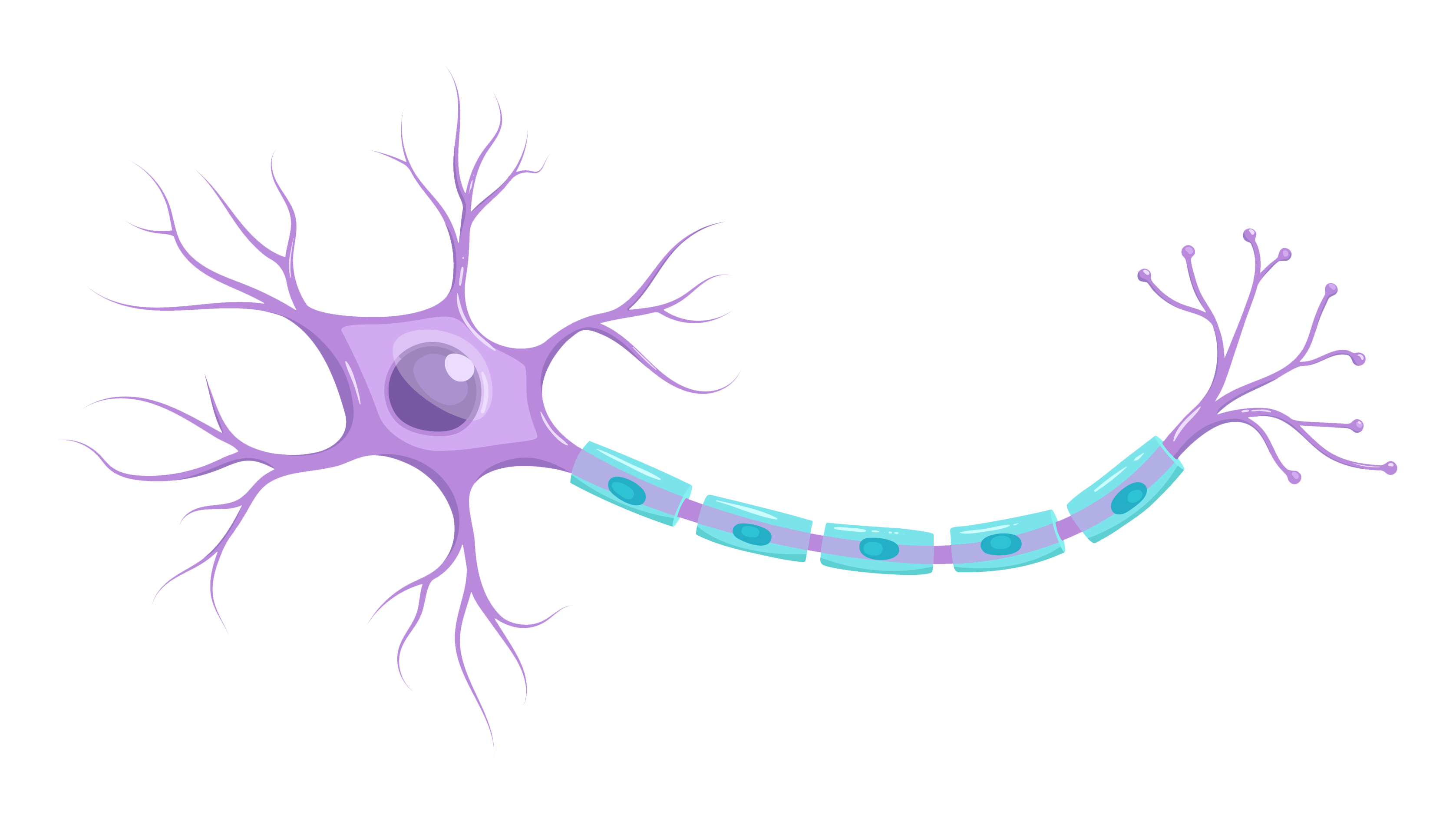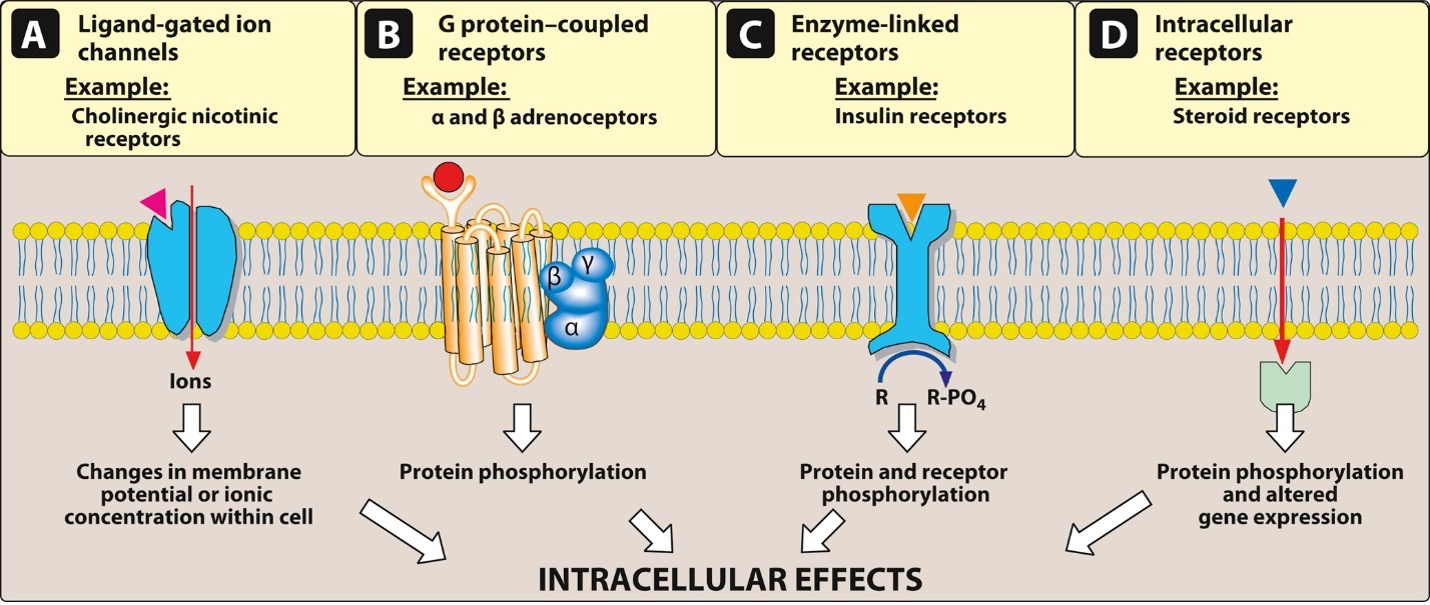What to expect from this module
Review of Physiologic Receptors
- When we covered Pharmacodynamics, we learned about receptors and drug actions.
- Recall the basic concept: The therapeutic and toxic effects of drugs result from their interaction with drug targets.
- Drug targets are often receptors but can also include enzymes, voltage-gated ion channels, membrane transporters, DNA, RNA, ribosomes, etc.
- Receptors are proteins that recognize a ligand that translates to a cellular event.
- Many receptors are at the cell surface, while others are in the interior of the cell.
- Cell surface receptors:
- G protein-coupled receptor (GPCR).
- Ligand-gated ion channels.
- Enzyme-linked receptors.
- Tyrosine-kinases.
- Intracellular receptors:
-
Nuclear receptors.
-
- Cell surface receptors:
Source: Peris J. Drug–Receptor Interactions and Pharmacodynamics. In: Whalen KL, Lerchenfeldt SM, Giordano CR. eds. Whalen8. Lippincott Williams & Wilkins, a Wolters Kluwer business; 2023. Accessed September 12, 2024.
Receptors are not alike and can be categorized by:
- Structural Family
- Functional Family
- Physiological Ligands
- Effectors/Transducers
When you learn about a new drug class, it is useful to understand the receptor target. Understanding the receptor helps deduce molecular mechanism of action, therapeutic effects, and adverse effects.
Cellular Receptors Table
A comprehensive list of cellular receptors that can act as drug targets is available here.
Now we will take a deeper dive and focus on the receptors of the Autonomic Nervous System (ANS), many of which are G Protein Coupled Receptors (GPCRs).
The below class sessions may be helpful as you review.
G O T O E. F L O M D
G O T O E. F L O M D


